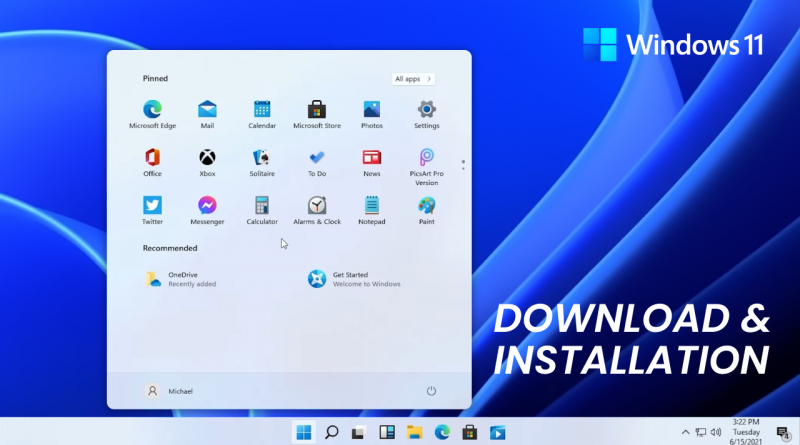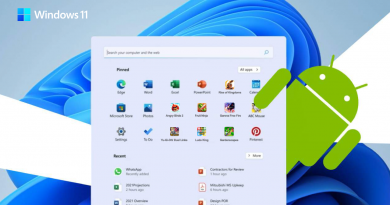Windows 11 Download and Installation – How to Fix the “Your PC Does Not Meet the Minimum Hardware Requirements for Windows 11” Error
One common complaint about Windows 11 during its preview and testing phase doesn’t even have to do with the operating system itself, but rather to the fact that lots of users can’t access it in the first place. If you’re one of the numerous people that have wanted to try Windows 11 through the Windows Insider Program but have come up against the dreaded “your pc does not meet the minimum hardware requirements for windows 11” error, then this guide is for you.
Error When Trying to Upgrade to Windows 11
In order to access a preview build of Microsoft’s upcoming OS, players must register their account in the Windows Insider Program. We’ve explained in further detail the entire process in our Windows 11 installation guide, which you can check out if you want to learn more.
In a nutshell, once the user is registered in the Insider Program, they will be able to download and access a preview branch of Windows 11, which can vary depending on the user’s PC specifications and other related factors. However, some users can run into a specific error when trying to upgrade, which is the one that results when checking for the eligibility of the current computer.
This error in question says “your pc does not meet the minimum hardware requirements for windows 11”, and can happen to anyone, even those running on high-end gaming machines with the latest hardware. And the truth of the matter is that this error doesn’t necessarily have anything to do with your machine specifications, though it definitely suggests that some required technologies are disabled, and this needs to be corrected in order to upgrade to Windows 11.
How to Solve the “Your PC Does Not Meet the Minimum Hardware Requirements for Windows 11” Error
As we mentioned, this issue could be related to many different reasons, and unfortunately, Microsoft’s update system doesn’t do much of a good job explaining the real cause behind it and instead gives all users a generic error message.
Luckily, there’s a free open source app called WhyNotWin11, which is downloadable for free from its GitHub page. The goal of this small app is to quickly scan your hardware and software and pinpoint the element that is blocking you from upgrading to Windows 11. This app scans several aspects of your setup, including the following:
- Architecture: Checks whether your OS and CPU are 64-bits, both of which are necessary for upgrading to Windows 11. If your OS is 32-bits, you must format and install Windows 64-bits. On the other hand, if your CPU is 32-bits, then you’ll need to upgrade to a better processor before proceeding.
- Boot Method: Windows 11 requires a UEFI boot method. If your results say “Legacy”, then you might need to resolve this through your BIOS.
- CPU Compatibility: Windows has provided a long list of compatible CPUs. If your unit is listed here, you will be able to upgrade to Windows 11.
- CPU Core Count: Windows requires a CPU with at least 2 cores to run.
- CPU Frequency: Windows 11 requires a minimum operating frequency of 1GHz in each CPU core.
- DirectX + WDDM2: To upgrade, your GPU must be compatible with DirectX 12 and with the Windows Display Driver Model 2.0.
- Disk Partition Type: To install Windows 11, your OS must be located in a drive formatted in GPT.
- RAM Installed: Windows 11 requires a minimum of 4 GB of RAM to run.
- Secure Boot: Windows 11 requires a motherboard capable of loading with Secure Boot. Incompatibility here would be fixed via the BIOS or by upgrading to a newer motherboard.
- Storage Available: Windows 11 requires a minimum storage space of 64 GB, though this requirement could be actually higher, depending on how your automatic updates are configured.
- TPM Version: Windows 11, similar to Windows 10 currently, requires TPM 2.0 to install.
Of all these aspects, the most common culprit of system incompatibility in modern machines is the TPM version, which is a technology of your motherboard that must be enabled in order to upgrade to Windows 11.
How to Enable TPM 2.0 for Windows 11
TPM stands for Trusted Platform Module and, in a nutshell, is a security feature that encrypts and protects your hardware through the use of cryptographic keys. This protection can go from requiring codes to boot up your PC, access drives, or even to authenticate and use certain apps. Windows makes ample use of this authentication feature in all its PCs, even to the point where, since 2016, Windows 10 has required TPM 2.0 in order to install. Similarly, Windows 11 has the same requirement, and this is the most common reason as to why your PC registers as not meeting the hardware requirements for upgrading to the new OS.
Luckily, as long as your motherboard actually supports TPM 2.0, activating this feature is very simple, though it does require going into the BIOS to do so. To enable TPM 2.0, you’ll need to follow these simple steps.
- Boot into your motherboard BIOS screen. The method is virtually the same for every motherboard, which consists of pressing a certain key before Windows boots, though the exact key varies according to the mobo itself.
- Once you’re in your BIOS, load up the “Advanced Settings”, and then navigate to the “Security” section.
- In this section, you should find a setting labeled as “TPM”, though its exact name can vary. Look for something that says “TPM”, “Intel Platform Trust Technology (IPTT)”, or “AMD CPU fTMP”, and set it to ENABLED.
- Save changes and restart.
After restarting your PC and booting into Windows, feel free to check your compatibility with Windows 11. If done correctly, you should now be able to access the preview branch suited to your hardware through the Windows Insider Program.
If you’ve never accessed the preview build of Windows 11, and are thinking of upgrading to the new OS when it comes out this October 5, there’s a good chance that you’ll run into this pesky error. Luckily, with the WhyNotWin11 app, and a bit of know-how, you’ll be able to identify the cause and, hopefully, resolve it in a few minutes.




